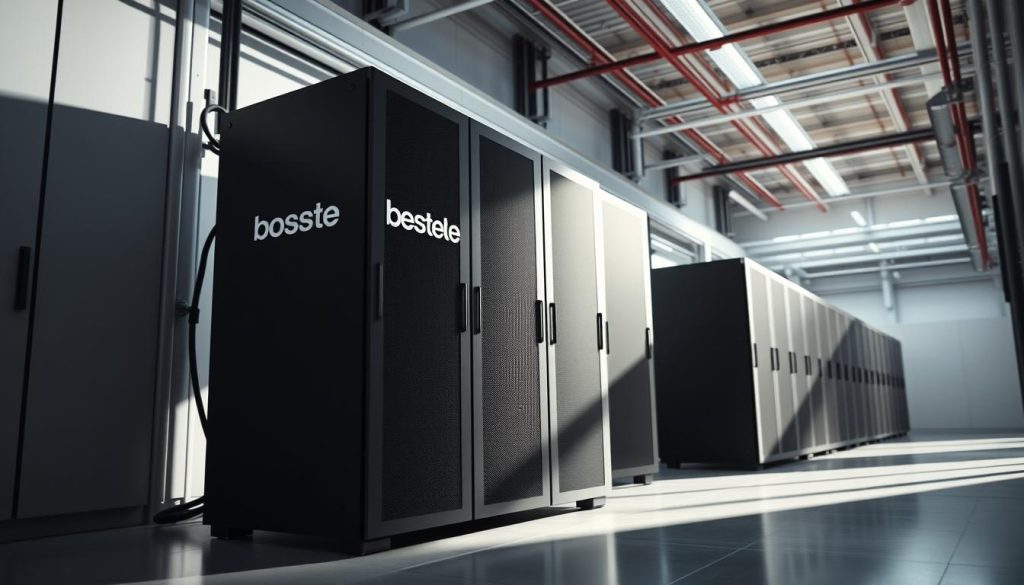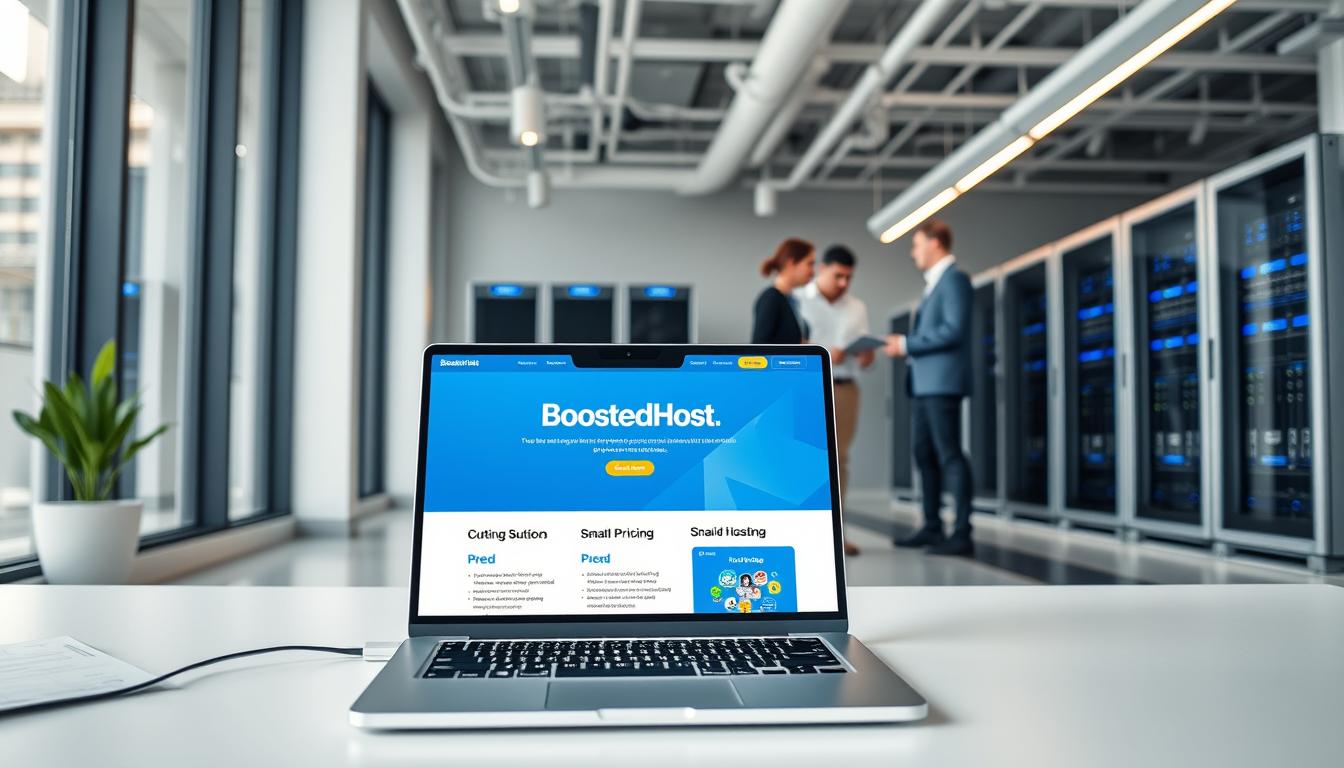We know the sinking feeling when a store or site goes dark. As a team that helps businesses pick reliable infrastructure, we feel that stress with you. We prioritize clear, data-led choices so you can stop guessing and start growing.
In this comparison we lay out facts about performance, uptime, and cost. We explain how a performance-first setup with LiteSpeed, global DNS acceleration, and sub-200ms global TTFB drives conversions and SEO. We also show how flexible cloud compute and a global footprint serve custom stacks.
Our goal: give business owners a fast, low-risk decision path. We highlight included security—free SSL, daily backups, AI malware protection—transparent pricing, Orbit AI Website Builder for quick launches, and 24/7 expert support that resolves most issues in minutes. Read on for clear recommendations by business size and growth stage.
Key Takeaways
- We compare performance and pricing to help businesses choose fast, predictable hosting.
- Performance matters: LiteSpeed and global DNS cut TTFB and boost conversions.
- Flexible cloud options suit custom needs; global data centers improve reach.
- Included security and backups reduce total cost of ownership.
- 24/7 expert support shortens downtime and speeds fixes.
At a Glance: Who Each Provider Best Serves in 2025
We map each provider to clear audiences so businesses can pick the right fit fast.
One provider targets entrepreneurs, small teams, and agencies that want predictable billing, fast performance, and included security. Their offerings include web hosting, Managed WordPress, WooCommerce, and reseller hosting with transparent pricing and built-in backups and SSL.
The other provider serves developers and IT teams that need granular VM sizing, custom network topologies, and advanced scaling. It appeals to startups through enterprises with 24/7 support, 15 global data centers, a free trial, and entry pricing from $4.

- Agencies benefit from flat plans and included stacks—simpler client billing and consistent site builds.
- Choose configurable cloud for complex apps, microservices, or specialized middleware.
- Orbit AI spins up polished sites for non-technical teams in minutes; WordPress and WooCommerce are optimized for speed and conversion.
Check external rating and reviews sources for uptime SLAs and support response times before you commit.
BoostedHost vs Kamatera: Performance, Speed, and Uptime
Performance and availability are the non-negotiable metrics for any business site. We focus on real-world factors that move the needle: server response, CDN reach, DNS timing, and uptime SLAs.

LiteSpeed advantage and sub-200ms global TTFB
LiteSpeed cuts server response times and compresses pages aggressively. That improves Core Web Vitals out of the box. CloudLinux adds resource isolation to stop noisy neighbors and keep sites steady under load.
Cloud compute flexibility and scaling
Elastic cloud compute gives firms granular scaling for containerized apps and memory-heavy workloads. This option fits developers and teams that need tailored CPU and RAM profiles.
Real-world uptime and CDN + DNS impact
99.99% uptime equals under 53 minutes of annual downtime—critical for busy stores and lead gen. Global CDN plus regional servers shortens the path to users in the US, Europe, and Asia. A self-hosted Global DNS Cluster further trims DNS lookup time, shaving milliseconds off first byte.
| Feature | Key Benefit | Business Impact |
|---|---|---|
| LiteSpeed Web Server | Faster TTFB & compression | Better Core Web Vitals and conversions |
| CloudLinux | Resource isolation | Stable performance under peak load |
| Elastic Cloud Compute | Custom scaling | Fits complex, containerized stacks |
| Global CDN + DNS | Lower latency worldwide | Improved crawl rates and ad quality scores |
- What to check in reviews: latency tests, load testing methodology, and multi-region uptime logs.
- Validate claims with third-party tests before committing your web stack.
Infrastructure and Data Centers: Servers, Regions, and Control
Infrastructure decisions affect speed, compliance, and migration risk for any business site.
Multi-region presence and practical reach
We list key regions that serve US, European, and Asian audiences. Zurich, North Rhine-Westphalia, Missouri, and Singapore place servers close to major markets. That lowers latency and simplifies compliance.
Cloud footprint and data-center scale
The competing provider offers 15 global data centers and cloud-native deployments with 24/7 support. This helps when you need proximity to a specific metro or special instance types.
Runtimes, control layers, and migration
Runtime support covers PHP, Node.js, and Python. WooCommerce caching on LiteSpeed speeds stores. cPanel and CloudLinux give easy control and resource isolation to prevent noisy neighbors.
- When choose a VPS: need isolation and predictable resources.
- When choose cloud-native: you want elastic scaling or custom instance sizing that can mimic bare metal control.
- Migration patterns: lift-and-shift WordPress is faster; complex apps often need refactoring.
| Feature | Benefit | Business impact |
|---|---|---|
| Multi-region servers | Lower latency | Better UX and SEO |
| Control layers | cPanel + isolation | Stable performance |
| Cloud instances | Custom sizing | Near bare metal flexibility |
Pick infrastructure that matches your risk profile, compliance needs, and growth plan.
Pricing and Plans: Transparent vs. Configurable Cloud Costs
Predictable monthly bills matter more than flashy entry rates when you run a business site. We show the real cost differences between a transparent host with bundled features and a configurable cloud provider with low entry pricing.
Transparent pricing with no hidden fees
One provider offers clear tiers: Launch $2/mo (50 GB SSD), Accelerate $3/mo (200 GB SSD), Starlight $7/mo (300 GB SSD). All include free SSL, firewall, WAF, daily backups, and unlimited bandwidth. A 30-day money-back policy reduces risk.
Entry pricing and trial considerations
The other provider advertises entry pricing from $4 and a free trial. That helps test cloud compute, but costs rise as you add storage, bandwidth, or specialized instances.
Total cost of ownership and plan variety
TCO favors bundled plans for sites that need SSL, backups, and malware scanning out of the box. Configurable cloud wins when you need elastic CPU/RAM or a specific data center.
| Scenario | Bundled Plan (monthly) | Configurable Cloud (monthly) |
|---|---|---|
| Small WordPress store | $3 — SSL, backups, WAF | $6+ — base VM + storage |
| Agency managing 20 sites | $40 — predictable, central billing | $80+ — variable usage fees |
| Spiky workload | $7 — stable plan | $variable — auto-scale cost |
How we rate pricing: pick predictability for steady revenue sites. Choose cloud for high elasticity and control. Check ratings, refund terms, and real invoices before you commit.
Included Features and Security: What You Get Out of the Box
Security and ready-made tools matter more than raw specs when you need to ship quickly and safely. We focus on the services and protections that reduce risk and speed rollout.
Day‑one tooling and protection
On sign-up you get free SSL, daily backups, AI-powered malware scanning, and a firewall/WAF. These reduce incident response time and limit chargebacks after compromises.
Automatic restores and auto-healing tech mean faster recovery from human error or bad plugins. That protects revenue and customer trust.
Control, customization, and account conveniences
cPanel and CloudLinux add staging, email, and domain management. One-click installs speed setup for each account and lower manual work for teams.
For firms that need deep tuning, the configurable cloud path offers full instance control and custom networks. Engineers can tune resources to match app needs.
Support that closes the loop
24/7 real support is available for urgent incidents and migrations. Quick expert help reduces downtime and support ticket volume.
| Included Item | Why it matters | Business outcome |
|---|---|---|
| Free SSL | Encrypts traffic and improves SEO | Trust, fewer warnings, better search visibility |
| Daily backups + rapid restore | Recover quickly from mistakes | Reduced downtime and lost sales |
| AI malware protection + WAF | Detects threats and blocks attacks | Lower incident costs and chargebacks |
| cPanel + CloudLinux | Familiar control panel and isolation | Faster provisioning and stable hosting |
| 24/7 expert support | Real help when problems hit | Faster fixes and fewer escalations |
Bottom line: bundled features cut complexity and lower total cost for most teams. If you need deep instance-level control, pick the cloud path and pair it with committed expert support.
Managed WordPress, Web Hosting, and eCommerce
For sites that sell, speed and reliability directly affect conversions and cart recovery.
Managed WordPress hosting tuned for WooCommerce uses LiteSpeed and LSCache to cut page loads and speed up cart actions.
We recommend the managed path for non-technical teams. It removes sysadmin work and keeps content teams focused on revenue. WooCommerce hosting includes caching, isolation, and daily backups.
Standard web hosting or move to a VPS?
Choose shared web hosting while traffic and plugins stay modest. Move to a vps when you hit consistent concurrency, heavy background jobs, or slow database queries.
- LiteSpeed + LSCache: faster carts, quicker search, fewer abandoned checkouts.
- Cloud / VPS route: root access and custom runtimes for developers—ideal for bespoke stacks.
- CDN & edge caching: complement both approaches for global shoppers and promo spikes.
Growth steps: enable caching, tune the DB, then scale vertically or horizontally. Use staging, backups, and rollbacks to make migration painless and keep sites stable during peaks.
AI Website Builder vs Cloud Customization: Orbit vs Infrastructure Variety
Choose whether you want a near-instant marketing site or a fully customizable cloud backend.
Orbit AI Website Builder can create a professional web site in under five minutes. It scaffolds domain setup, SSL, and content so owners go live fast. That speed compresses weeks of design and setup into minutes.
When to pick cloud VPS or bare-metal-style control
Pick cloud VPS or bare metal-like setups when you need deep control for microservices, headless CMS, or CI/CD pipelines. Configurable instances provide pinned resources, custom kernels, and networking policies for complex stacks.
- Trade-offs: Orbit = time-to-value. Cloud = maximum control and variety.
- Governance: Orbit keeps updates and backups managed. Cloud shifts maintenance to your team or a managed provider.
- Hybrid: Orbit for marketing, cloud VPS for app backends—best of both worlds.
| Option | Speed | Control | Best for |
|---|---|---|---|
| Orbit AI Builder | Under 5 minutes | Low (managed) | Landing pages, small shops |
| Configurable Cloud VPS | Hours to provision | High (custom kernels) | Microservices, custom apps |
| Bare‑metal-style VMs | Days to tune | Maximum | High-performance, regulated apps |
Recommendation: start with Orbit for fast revenue and pair it with a cloud backend when your app needs more control. For a turnkey managed marketing site, see our Hosted web plans at Orbit AI Website Builder.
Support and Customer Experience: Responsiveness, SLAs, and Reviews
Fast, reliable support makes the difference between a brief hiccup and a lost sale. We value response times and the technical depth behind each reply. That matters for any business running customer-facing sites.
24/7 expert support resolving most requests in minutes
We provide real 24/7 support—no scripts. Most tickets are resolved in minutes, keeping stores and lead forms live. Instant setup and a 30-day money-back guarantee reduce pre-sales risk.
24/7 professional support for startups to enterprises
The other provider offers 24/7 live support designed for global teams and complex stacks. Their model suits enterprises that need regional coverage across 15 data centers.
- We prioritize response time—fast fixes keep revenue flowing.
- Compare channels: chat, phone, ticket, and escalation paths for critical incidents.
- Proactive monitoring and auto-healing cut ticket volume and reduce repeat issues.
- Look for migration help, staging support, and rollback options during pre-sales questions.
- Check reviews for time-to-resolution, technical depth, and agent empathy.
| Support Aspect | Why it matters | What to check in reviews |
|---|---|---|
| Response time | Limits downtime | Average time-to-resolution |
| Technical depth | Fixes root causes | Complex-issue handling examples |
| SLA and guarantees | Aligns risk tolerance | Compensation and escalation clarity |
Final advice: match support maturity to your in-house skills and business risk. Read reviews and the fine print of SLAs to confirm the support rating you rely on.
Use Cases and Recommendations by Business Type
We translate tech choices into clear guidance for agencies, resellers, and engineering teams. Below we match common stacks and team skills to practical hosting choices.
Agencies and resellers needing speed, reliability, and predictable pricing
We recommend the reseller path for agencies managing many clients. It offers WHM and account automation, predictable monthly plans, and included SSL and backups.
Why this fits: fast migrations, consistent servers across accounts, and cheaper TCO for client portfolios. Zurich, Missouri, and Singapore data centers help meet locality and compliance needs.
Developers and IT teams needing granular cloud control and scaling
For custom kernels, advanced networking, and CI/CD pipelines, pick flexible cloud instances. This metal-like approach gives near bare metal performance for demanding workloads.
Why this fits: 15 global data centers, full instance control, and 24/7 support make it ideal for performance-sensitive apps and engineering teams.
- Simple sites, predictable revenue: go reseller and keep costs steady.
- Growing stores with traffic spikes: pair managed web hosting with CDN and scale vertically.
- Complex apps or regulated workloads: choose metal-like VMs and network control; plan for re-platforming when needed.
| Scenario | Recommended path | Business outcome |
|---|---|---|
| Agency with 20 clients | Reseller + WHM | Predictable billing & fast onboarding |
| High‑traffic WooCommerce | Managed hosting + strong servers | Stable performance & fewer cart losses |
| CI/CD, microservices | Configurable cloud VMs | Max control and scale |
Conclusion
This final summary ties technical differences to the money and time you’ll save running your web estate.
For most small and mid-size business sites we recommend the default hosting path. It delivers LiteSpeed speed, Global DNS, clear pricing, free SSL, daily backups, and AI malware protection for instant value. These bundled features cut hidden costs and speed migrations.
Pick the configurable cloud provider when you need bare metal-like control, custom networks, or global instance placement across many servers. That route suits engineering teams building complex stacks.
Do an objective review: run real-world tests, check invoices, and confirm SLAs. Start on the faster, predictable plan for immediate ROI or trial the cloud option if customization wins. Bring any final questions to pre-sales and we’ll map the fastest, safest path forward.
FAQ
Which provider is best for a small business seeking predictable pricing and fast WordPress performance?
We recommend the provider with transparent, all-inclusive plans and LiteSpeed-optimized stacks when you want predictable monthly costs and strong WordPress/WooCommerce performance. Those plans typically include free SSL, daily backups, and CDN to keep pages fast and secure without surprise add-ons.
Which option is better for developers who need granular cloud control and custom stacks?
Choose the cloud-native, configurable service that offers scalable compute, multiple OS choices, and API-driven control. That provider lets you build bespoke stacks, run containers, and scale CPU/RAM independently — ideal for developers and IT teams.
How do uptime guarantees compare for business continuity?
Both providers target enterprise-grade uptime; look for a 99.99% SLA for mission-critical sites. Confirm the SLA terms, credit policies, and real-world historical uptime reports before committing.
Does one provider offer better global performance and CDN options?
Global CDN and DNS acceleration matter for Core Web Vitals. Opt for the provider with integrated CDN and edge DNS points across major regions — this reduces TTFB and improves load times across continents.
Are there free trials or low-entry pricing to test cloud performance?
Yes. Some cloud providers offer free trials or low-entry pricing from around /month to test compute and networking. Use trials to measure latency, provisioning speed, and support responsiveness before scaling.
What hosting choice is best for agencies and resellers?
Agencies benefit from predictable, reseller-friendly plans with isolated resources, white-label support, and strong caching (LiteSpeed). Look for control panels, staging, and backup policies that support client workflows.
How important is LiteSpeed for WooCommerce and WordPress stores?
LiteSpeed significantly improves PHP execution and caching, lowering page load times and TTFB — often sub-200ms in optimized setups. For high-traffic stores, this translates to better conversion rates and fewer checkout failures.
Do managed WordPress plans include security and backups by default?
The best managed plans include free SSL, daily backups, malware protection, and CDN. Confirm whether malware scanning is AI-powered and if restores are included without extra fees.
When should a business choose bare-metal or dedicated servers over cloud VPS?
Choose bare-metal when you need consistent peak performance, dedicated resources, or specific non-virtualized hardware. For bursty workloads and flexible scaling, cloud VPS is usually more cost-effective.
What runtime environments and languages are supported?
Look for support for PHP (multiple versions), Node.js, Python, and common databases. Providers that support CloudLinux and resource isolation give more stable multi-tenant hosting for mixed stacks.
How do security features differ between packaged hosting and configurable cloud plans?
Packaged hosting often bundles SSL, WAF, daily backups, and malware protection. Cloud plans offer deeper control but may require add-ons or third-party tools for full managed security. Weigh convenience versus control.
How responsive is support and what SLAs should we expect?
Expect 24/7 expert support for business plans, with most routine issues resolved in minutes. Verify response time SLAs, escalation paths, and access to senior engineers for complex incidents.
Can we launch a professional site quickly with an AI builder?
Yes. AI website builders can create a professional site in under five minutes, handling layout, images, and basic SEO. Use them for rapid prototyping or small business launches — then migrate to a custom stack as traffic grows.
What is the total cost of ownership when comparing all-inclusive hosting to configurable cloud?
All-inclusive plans reduce hidden costs by bundling SSL, backups, and security. Configurable cloud can be cheaper at scale but needs careful tracking of add-ons (backups, bandwidth, IPs). Run a TCO comparison over 12–24 months before choosing.
Are there geographic data center considerations for compliance or latency?
Yes. Choose providers with data centers in your target markets — e.g., Switzerland, Germany, Singapore, USA — for lower latency and easier compliance with regional data rules. Multi-region deployments improve redundancy.
How easy is it to migrate existing sites between these providers?
Migrations range from simple (managed WordPress moves) to complex (custom stacks). Look for free migration services, staging tools, and clear rollback procedures to minimize downtime and risks.




